Growing Cannabis in a Garden or Backyard
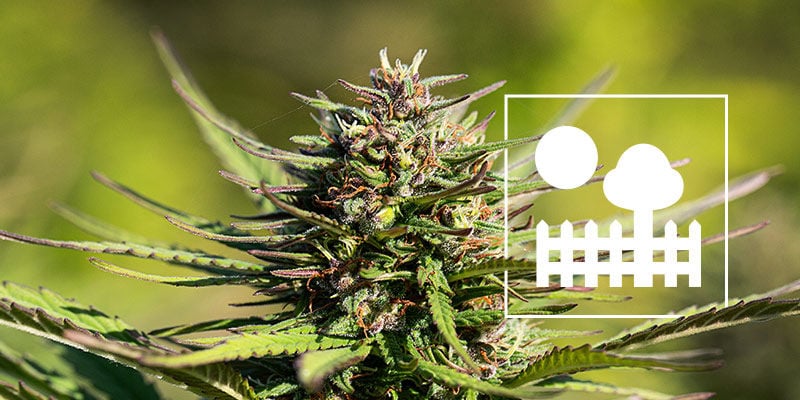
Growing in the garden comes with numerous benefits, including (usually) better buds. So if you have the space to grow cannabis outdoors, we'd recommend that you give it a go!
When we choose to grow cannabis, the first question we have to consider is whether to grow indoors or outdoors. Unfortunately, many of us don’t have gardens, so growing outdoors is not an option. But for those lucky enough to have an outdoor space in which to grow, this option can be seriously tempting, and for good reason.
On the whole, we’d advocate for growing outdoors, so long as it’s safe to do so. Never run the risk of getting into trouble for growing weed; the consequences can be shockingly harsh in some countries.
In this article, we explore the benefits and drawbacks of growing cannabis in your garden or backyard, and some tips on doing so successfully.
Why grow cannabis in your garden?
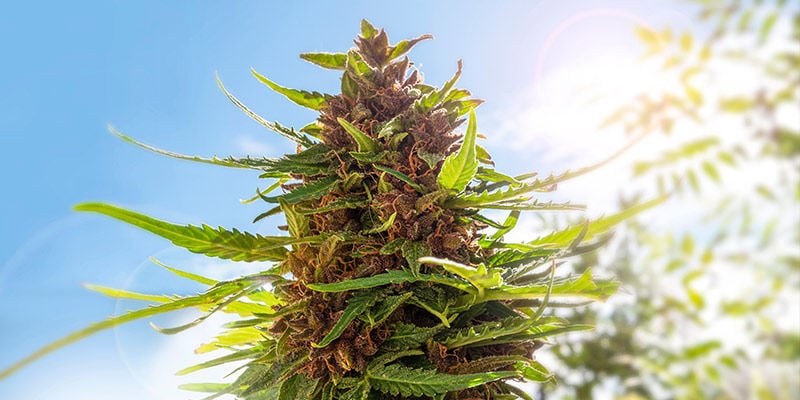
There are many great reasons to grow cannabis in your garden. If you have a suitable space and live in an area where growing weed is legal, there’s little reason not to cultivate a crop outdoors during the sunniest months of the year. It’s cheap, and the results can be so good that it’s more than worth the fairly minimal effort involved.
Below, we’ll list the pros and cons of growing cannabis outdoors.
Pros of garden growing
The upsides of growing weed outdoors in a garden are numerous:
- Harnesses the power of the sun: The sun, if the clouds don’t cover it, produces better-quality light than even the most expensive and high-tech grow lights, and your plants will positively thrive beneath its radiance. Using the sun to grow cannabis plants is one of the most effective (and cost-efficient ways) to grow a crop.
- Saves money: Growing outdoors is incredibly cheap compared to setting up an indoor grow. Tents, lights, ventilation systems; these can add up to hundreds if not thousands of euros. Growing outdoors just requires soil, fertiliser, pots, and cannabis seeds (and maybe a watering can). If you don’t want to break the bank, grow outdoors.
- Can be more enjoyable: It depends on what you’re into, but for many, going out into the garden beats opening up a grow tent and working under artificial lights. Gardening is known to be great for mental and physical health, and growing cannabis is no different.
- Incredible results: Plants grown outdoors can become monstrously large—in part because they have more space, in part because of the sun, and in part because of the length of the growing season. Generally, plants grown outdoors will produce huge yields.
- Multiple crops in one season: If you grow autoflowers with a short life cycle outdoors, then you can quite easily grow two or three crops in a single summer season, which can land you with a huge amount of bud by the time winter comes around. If you’re limited on space, this is a great way to still grow numerous plants.
- Less work: Generally, if all goes well, growing outdoors is much less labour intensive compared to growing indoors, making it a more relaxed experience.
Cons of garden growing
There are, however, some potential downsides to growing outdoors, including:
- Legality: For most of us, growing cannabis is illegal. So, depending on where you live, visibly growing cannabis outdoors might come with a huge risk. In this case, stealth measures are essential. But it might also be better to take your grow indoors, where it’s totally hidden, or to a guerrilla grow location away from your home.
- Less control: Indoors, you can control almost all environmental factors, whereas outdoors, you control almost none. If you get a great summer, then no problem! But if you get a wet and windy one with a lot of cloud cover, your outdoor grow might not be as productive as you once hoped.
- Pests and disease: When growing outdoors, you’re at nature’s mercy. Pests and diseases have a much easier time finding your plants if they’re out in your garden, which means you have to keep an eye out for them, and act quickly if they appear. Sometimes, you might get unlucky and lose a crop to some critter or pathogen. However, if you arm yourself with the appropriate knowledge, then you stand a much better chance of averting disaster.
Tips for garden growers
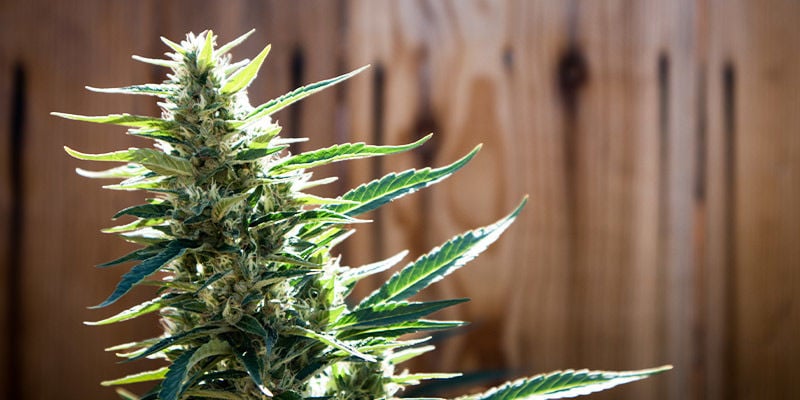
In some ways, outdoor growing is quite different to indoor growing, so it’s important to familiarise yourself with some of the nuances so you can carry out your grow appropriately, and get the most out of your crop. There’s nothing particularly difficult about growing outdoors—you just need to know what to do.
Plot position is crucial
Choosing an appropriate place to grow is absolutely essential. First, you need to consider how much direct sunlight a spot gets. Ideally, it should get at least eight hours a day. Less than this, and your plants will be less productive than they could be. Moreover, the more of that daylight that falls around noon, the better, as this light is stronger. Another option is to grow your outdoor plants in pots so that you can move them around to soak up the most sun, and bring them indoors if you experience bad weather.
As well as daylight, you have to consider darkness. A plot directly below a streetlight might cause photoperiod plants to not register the darkness, meaning they may never flip to flowering. Or, even if they do, they might run into developmental problems. Photoperiod plants need true darkness as much as they need light. If you think nighttime light might be a problem, then grow autoflowering plants, as these don’t require a specific dark period. However, if you do choose to grow photoperiod plants and are worried about interruptions in the dark period, consider erecting a small blackout structure using a tarpaulin to cover your plants at night, ensuring total darkness.
While light is undoubtedly an important consideration, you should also consider visibility. How out in the open will your grow be, and how much does this matter? Do you have nosy neighbours who will call the police, or are you safe? Take this seriously, as you might get into serious trouble if you don’t.
Otherwise, you should also consider factors such as drainage and moisture retention (if you’re growing in the ground), as you don’t want to waterlog the soil and drown the roots, nor do you want them to dry out. This is another reason it may be beneficial to grow in pots, or at least in raised beds with cannabis-friendly soil amended with compost.
Plant after the last frost
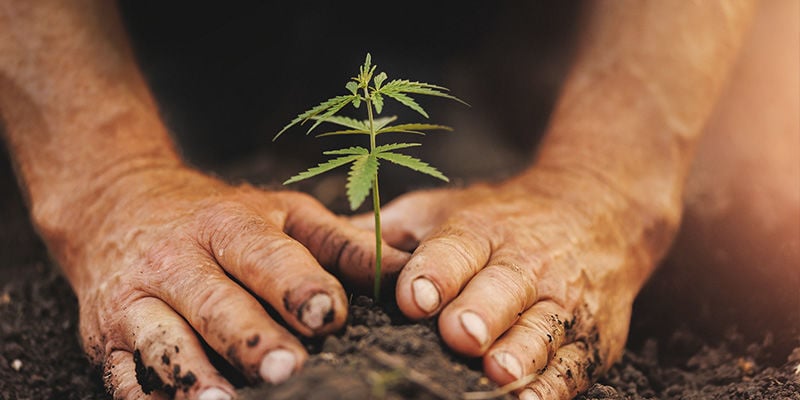
You must not plant seeds or seedlings outdoors until the last frost has passed. If your seeds sprout before this, one frosty night will surely kill them. To get the most out of your plants, consider starting them indoors in February or March, then move them outdoors in April or May, once the weather has warmed up.
Depending on where you live, the exact dates during which you can begin to plant outdoors will vary, so make sure to acquaint yourself with your local cannabis grow calendar.
Consider screens and natural barriers
There are numerous reasons for shielding your plants, whether it’s discretion, protection from the elements, or a pest-prevention technique. If you have shrubbery or a well-placed fence, this can do the job to keep your grow private. If not, you can also erect screens to cover your plants, keep them hidden, and protect them from strong winds.
Companion planting has numerous benefits
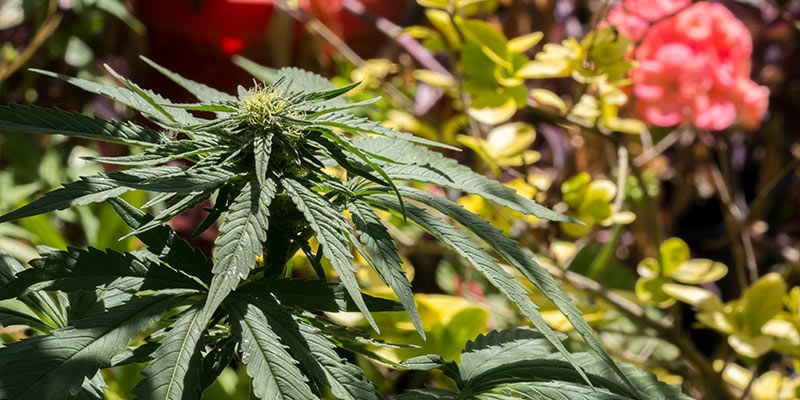
Companion plants are really useful when growing cannabis outdoors. Not only can they help to camouflage a grow, but they can lure insects away from your cannabis crop while also attracting predatory insects that will eradicate certain pests. What’s more, introducing more plants can only add to the biodiversity and beauty of your garden, so there’s nothing to lose.
Growers in colder climates should consider greenhouse growing
If you live further up in the Northern Hemisphere, or further down in the South, then you needn’t give up on the idea of growing outdoors. Indeed, certain fast-growing strains can thrive even in the shortest summers, particularly autoflowers.
But you can also go halfway between indoor and outdoor growing and use a greenhouse, or even a conservatory. These come with most of the benefits of outdoor growing—free sun and little equipment—but remain warm and protect plants from the elements, which in some locations is necessary.
Is it legal to grow cannabis in your garden?

It all depends on where you live. The cultivation of cannabis remains illegal in most countries, and if you’re not certain what the laws are where you live, you should properly investigate them before you even purchase a seed (as these are also illegal in certain countries).
Understanding the legal situation regarding cannabis in your country of residence is very important in order to avoid running into legal trouble.
Give garden growing a go
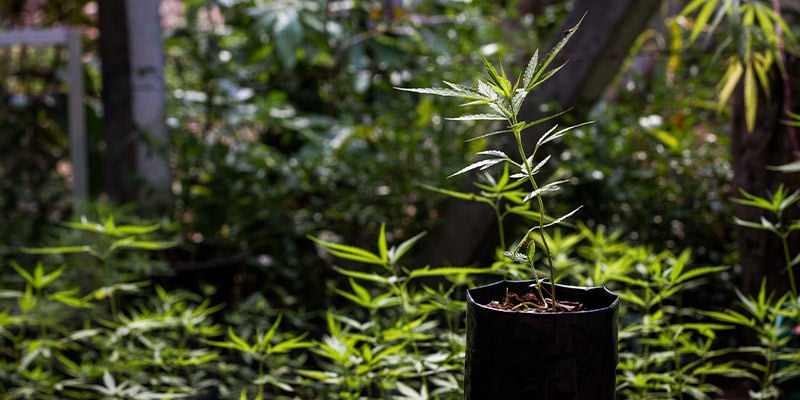
If you’re not at risk of going to prison or paying a hefty fine, we’d really recommend growing cannabis outdoors in your garden or backyard, the way nature intended. Not only is it incredibly cheap compared to indoor growing, but it can yield better results and offers a sense of peace and joy that you won’t find with an indoor grow.
Plus, outdoor growing is pretty easy too, so it’s not a huge undertaking. Really, the only thing to worry about is legality. But if it’s legal, or you’re comfortable with the risk, then there’s little reason not to grow outdoors—so long as you have a suitable space.













 United States
United States










